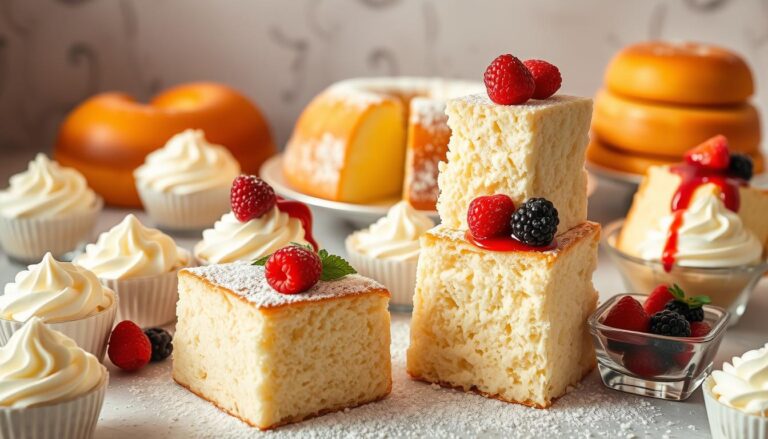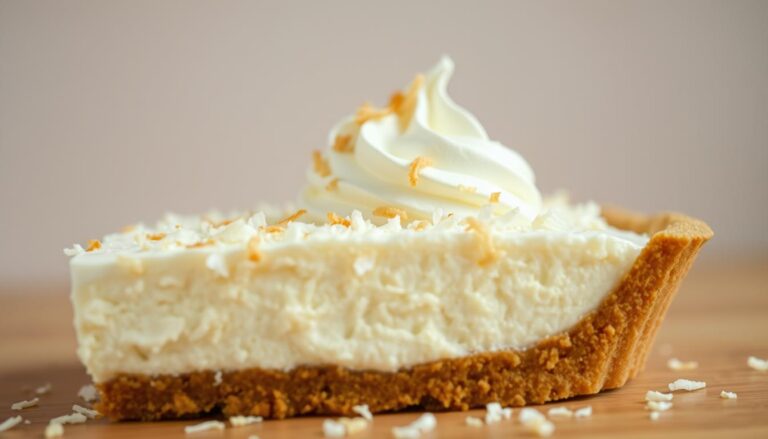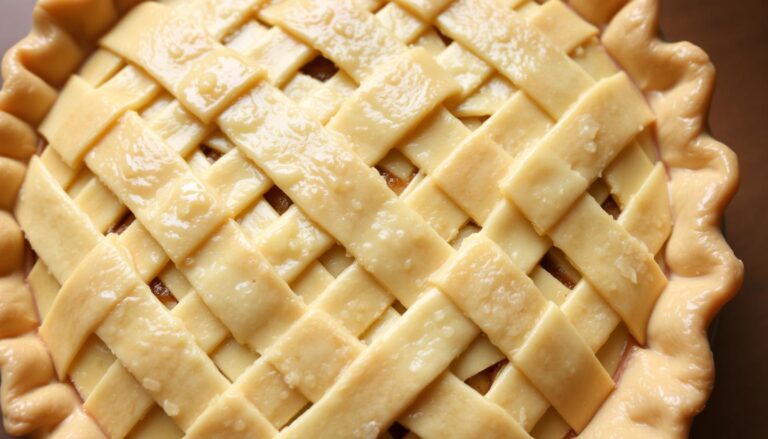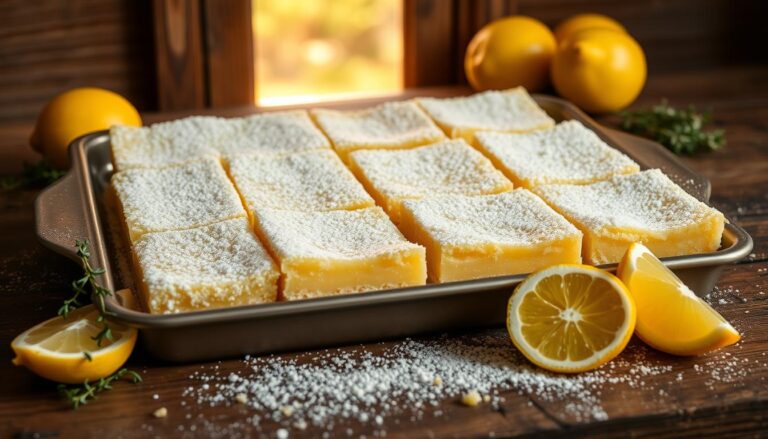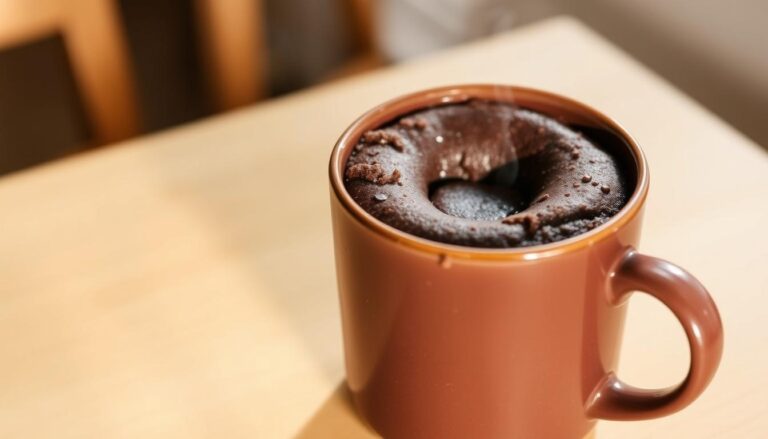Imagine a dessert that combines the best of both worlds – the softness of cake and the crustiness of bread. This innovative treat, known as half bread half cake, has taken Southeast Asian bakeries by storm and is now gaining popularity worldwide.
The unique texture of this dessert is a game-changer for bakers and food enthusiasts alike. In this article, we’ll explore 7 exciting recipes that range from classic to innovative variations, perfect for those looking to try something new and impress their loved ones.
These recipes are not only delicious but also customizable to suit different flavor preferences and dietary needs, making them perfect for any occasion.
Table of Contents
What Is Half Bread Half Cake Dessert?
You might have come across a dessert that seems to defy categorization – is it bread or is it cake? The half bread half cake dessert is a unique treat that has garnered attention for its intriguing composition. Essentially, it involves placing a bread dough in a loaf tin, followed by pouring cake batter on top, and then baking them together. The result is a loaf where the bread is surrounded by cake, creating a delightful contrast of textures and flavors.
Origin and Popularity
The half bread half cake dessert has its roots in Southeast Asian baking traditions, particularly in Singaporean and Malaysian bakeries where it’s a common offering. Its popularity stems from the novelty and the unique experience it provides to those who try it. As people become more adventurous in their culinary explorations, desserts like the half bread half cake gain traction for their innovative twist on traditional baked goods.
The combination of bread and cake in one dessert not only showcases the versatility of baking but also caters to a wide range of tastes and preferences. It’s a testament to the creativity of bakers who are constantly looking for ways to surprise and delight their customers.
Unique Texture and Flavor Profile
The half bread half cake dessert boasts a fascinating texture profile, with the bread portion offering a slightly chewy and structured bite, while the cake portion is soft, tender, and moist. When you take a bite, the initial texture from the bread gradually gives way to the softer cake, creating a dynamic mouthfeel that’s both engaging and satisfying.
As for the flavor, the milder taste of the bread allows the sweeter cake to take center stage, creating a balanced flavor experience. The contrast between the two components also results in an interesting transition zone where the flavors meld together, adding depth to the dessert. The use of different ingredients, such as yeast in the bread and baking powder or soda in the cake, contributes to the distinct textures and flavors, making each component complement the other beautifully.
“The beauty of the half bread half cake lies in its ability to balance contrasting textures and flavors, creating a truly unique dessert experience.”
Why You’ll Love These Half Bread Half Cake Desserts
If you’re looking for a dessert that’s both familiar and innovative, half bread half cake is the way to go. This unique dessert combines the best qualities of bread and cake, creating a truly special treat.
Perfect Texture Combination
The half bread half cake dessert offers a delightful contrast in textures. The bread component provides a satisfying chewiness, while the cake part is light and fluffy. This combination makes for a fascinating eating experience that will keep you coming back for more. Whether you’re enjoying it with a morning cup of coffee or as an afternoon snack, the texture combination is sure to please.
Versatility for Any Occasion
One of the standout features of half bread half cake desserts is their versatility. You can serve them plain for a casual breakfast or dress them up with glazes, fruit, or whipped cream for a special occasion. They pair perfectly with both hot and cold beverages, from a morning coffee to afternoon tea or even dessert wine. Here’s a quick look at how you can enjoy them:
| Occasion | Serving Suggestion |
|---|---|
| Casual Breakfast | Serve plain or with a simple glaze |
| Special Event | Dress up with fruit, whipped cream, or a rich glaze |
| Afternoon Tea | Pair with tea or coffee, served with or without toppings |
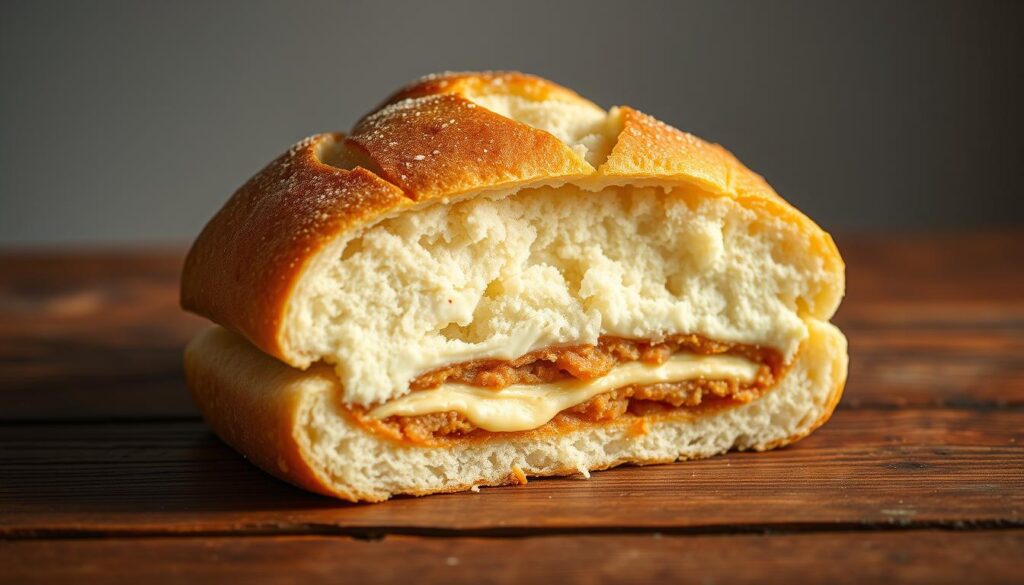
These desserts can be made ahead of time, making them convenient for entertaining or busy weekdays. You can also portion them as individual servings for parties or make larger loaves for family gatherings. The sturdy texture makes them portable for picnics or potlucks, offering a delicious treat that’s easy to share.
Essential Tools and Ingredients
To create the perfect Half Bread Half Cake dessert, you’ll need to have the right tools and ingredients at your disposal. Having the correct equipment and high-quality ingredients is crucial for achieving the desired texture and flavor.
Kitchen Equipment You’ll Need
Before starting, ensure you have the necessary kitchen equipment. You’ll need a mixing bowl for combining ingredients, a measuring scale for accurate measurements, and a baking pan suitable for both bread and cake. A stand mixer can be helpful for mixing the batter, but it’s not essential. You’ll also need a whisk and a rubber spatula for mixing and folding ingredients.
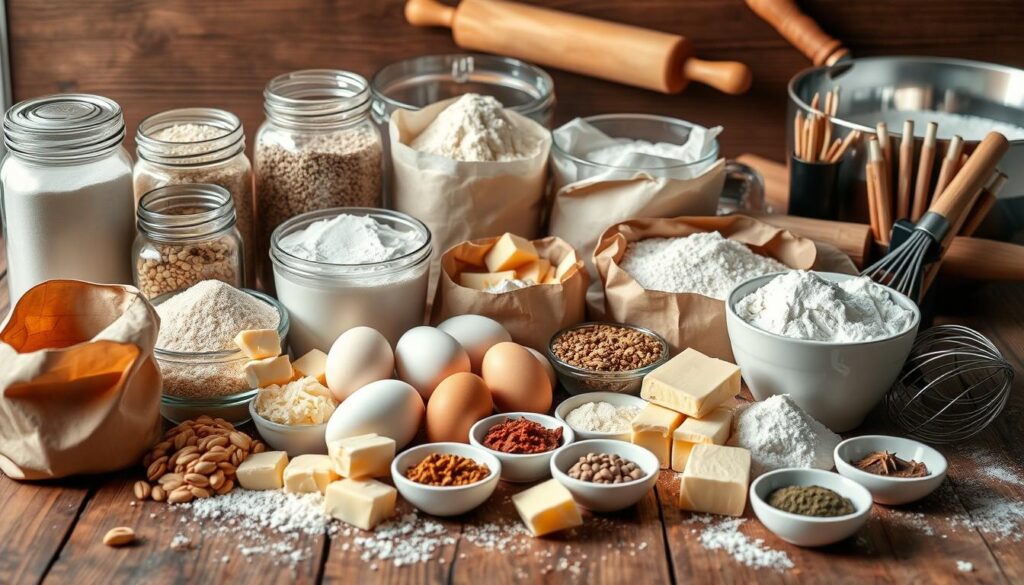
Basic Ingredients for Both Components
Both the bread and cake components share some common ingredients. Flour is a primary ingredient, providing structure to both parts. You’ll need all-purpose flour or a combination of all-purpose and bread flour. Sugar adds sweetness and tenderness. You can use granulated sugar or experiment with brown sugar for a different flavor profile. Other shared ingredients include eggs, which contribute moisture and richness, and salt, which enhances the overall flavor.
The bread portion requires yeast and water, while the cake portion needs butter and milk. Using room temperature ingredients, especially for the cake, ensures proper incorporation and a smooth batter. The quality of these ingredients directly affects the final taste and texture of your Half Bread Half Cake dessert.
Classic Half Bread Half Cake Recipe
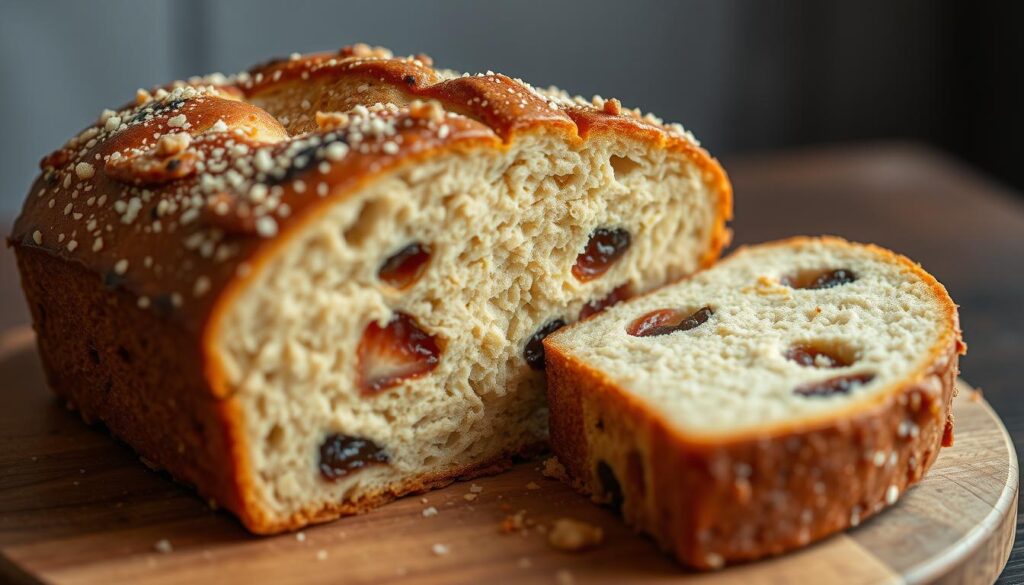
Our classic half bread half cake recipe is a must-try for anyone looking to elevate their dessert game. This unique dessert combines the best qualities of both bread and cake, offering a delightful texture and flavor experience.
Bread Dough Preparation
To start, you’ll need to prepare the bread dough. This involves mixing the ingredients, kneading the dough, and letting it rise until it’s light and airy. The key to a great bread component is in the proofing process, ensuring it’s adequately risen before baking.
Once your dough is proofed, it’s ready to be combined with the cake batter. Make sure to handle the dough gently to avoid deflating it.
Cake Batter Preparation
Preparing the cake batter involves creaming together butter and sugar, beating in eggs, and gently folding in flour. The result should be a smooth, even batter that’s free of lumps.
To preheat the oven, set it to 170°C (340°F). This temperature is crucial for the baking process, ensuring that both the bread and cake components cook evenly.
Baking and Cooling Process
Pour the cake batter over the proofed bread dough in the baking pan. Then, bake in the preheated oven at 170°C for approximately 45 minutes. After 25 minutes, cover the pan with a Pullman tin cover to prevent over-browning.
To check for doneness, perform the skewer test by inserting a skewer into the center. If it comes out clean, your dessert is ready. Let it cool in the pan for 10-15 minutes before transferring it to a wire rack to cool completely.
Chocolate and Vanilla Half and Half Cake
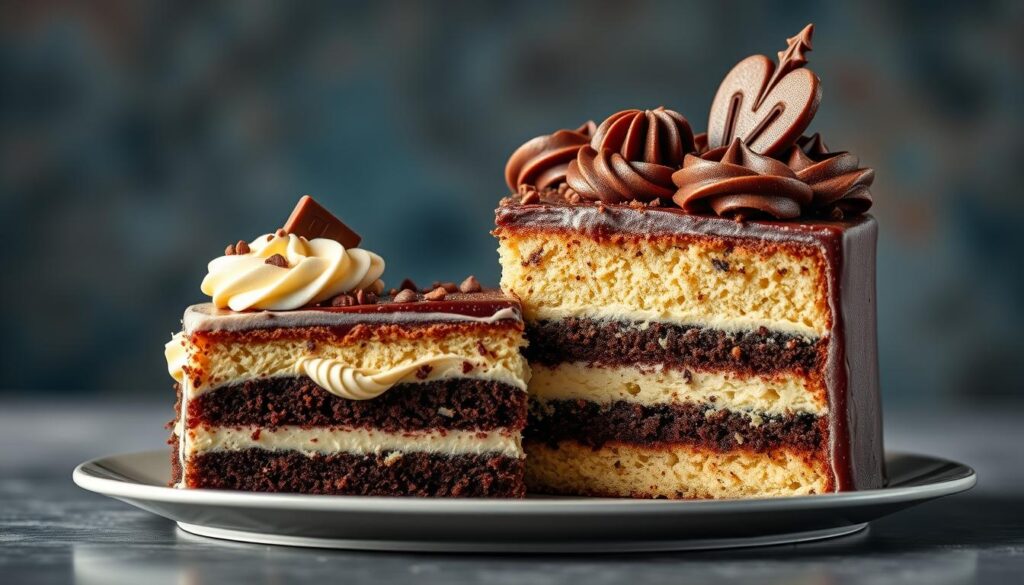
The half-and-half cake concept reaches new heights with the Chocolate and Vanilla variation, offering a delightful twist on traditional desserts. This unique dessert combines the richness of chocolate and the simplicity of vanilla in a single, stunning cake.
Creating the Perfect Chocolate Batter
To create the chocolate batter, you’ll need 117 grams of all-purpose flour, 1/4 teaspoon of baking soda, 44 grams of natural cocoa powder, 1/2 teaspoon of kosher salt, and 125 grams of buttermilk, among other ingredients. Ensure that your butter is at room temperature and that you use high-quality cocoa powder for the best flavor.
Making the Vanilla Batter
The vanilla batter requires 192 grams of all-purpose flour, 1/4 teaspoon of baking soda, 1/2 teaspoon of kosher salt, and 125 grams of buttermilk. Use room temperature ingredients and pure vanilla extract to achieve the best results.
Combining and Baking Techniques
You can combine the chocolate and vanilla batters in various ways, such as side-by-side, layered, or swirled. Use a spatula to create clean divisions between the batters for a striking visual effect. Bake the cake in a preheated oven at the recommended temperature and time. To prevent one batter from cooking faster than the other, ensure that your cake pan is evenly filled and that you’re using the correct baking time.
To test for doneness, check that the cake is cooked through, noting that the chocolate portion may appear more moist than the vanilla. Once baked, allow the cake to cool before unmolding. The boundary between the two batters will naturally create a subtle marbled effect, adding to the cake’s visual appeal.
Egg Separation Method for Lighter Texture
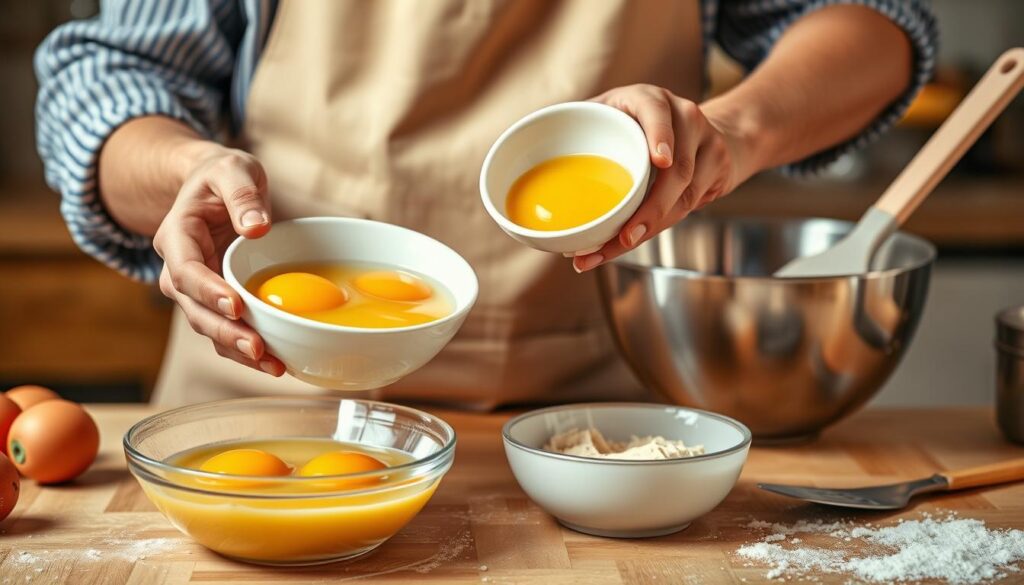
Achieving a lighter texture in your Half Bread Half Cake desserts can be easily accomplished by mastering the egg separation method. This technique involves separating egg whites from yolks and then incorporating them into the batter in a way that maximizes fluffiness and tenderness.
Step-by-Step Egg Separation Process
To begin, you’ll need to segregate the egg whites from the yolks. For the yolk portion, whisk the egg yolks until they become fluffy. Then, add half of the sugar and cooking oil, stirring until well combined. Sift in the cake flour and milk powder, and set the mixture aside for later use. Meanwhile, beat the egg whites until they reach a soft peak. Gradually add the remaining sugar until the mixture becomes firm and holds its shape.
The next step involves gently folding the egg whites into the yolk mixture. Start by pouring one-third of the egg whites into the yolk batter and fold until well mixed. This initial folding helps to “lighten” the yolk mixture, making it easier to incorporate the remaining egg whites without deflating the batter.
Folding Techniques for Maximum Fluffiness
To incorporate the egg whites into the yolk mixture without losing the air bubbles, use a gentle cutting and folding motion with a large spatula. This technique preserves the air in the batter, ensuring the cake remains light and fluffy. Pour the mixed batter into the remaining two-thirds of egg whites and continue to fold until well mixed. The batter is properly folded when it is uniform in color, still light, and airy, with no visible streaks of egg white.
Common mistakes that can lead to deflated batter include overmixing and using a vigorous mixing motion. To avoid these pitfalls, be gentle when folding the ingredients together, and work efficiently to minimize the time the batter spends in the bowl before being poured into the cake tin. Immediately transferring the folded batter to the prepared pan and baking promptly is crucial for achieving the desired texture in the final cake.
By mastering the egg separation method and the associated folding techniques, you can significantly enhance the texture of your Half Bread Half Cake desserts, making them a delight for anyone who tries them.
Quick and Easy Version Using Cake Mix
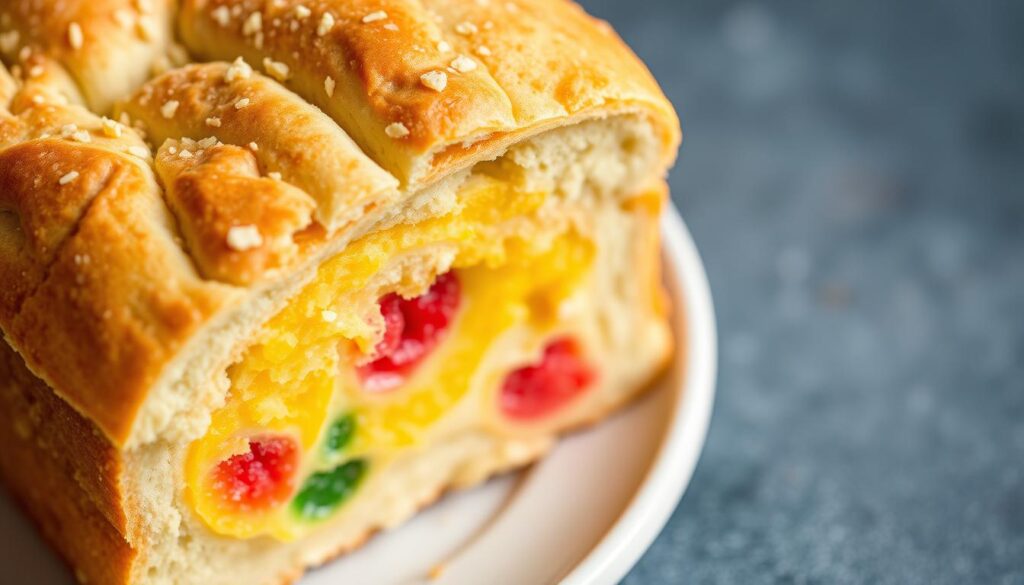
To save time, you can opt for a ready-made cake mix for your half bread half cake recipe. This approach simplifies the baking process without compromising on the unique texture and flavor profile of this dessert.
Selecting the Right Cake Mix
When choosing a cake mix, consider the flavor profile you want to achieve. For a classic half bread half cake, a vanilla or yellow cake mix works well. If you’re feeling adventurous, you can try a chocolate or red velvet mix to give your dessert a different twist. The key is to select a mix that complements the bread component.
Modifying Store-Bought Mix for Best Results
To elevate your half bread half cake, you can modify the store-bought cake mix by adding a few extra ingredients. Consider adding an extra egg for moisture, a teaspoon of vanilla extract for flavor, or some chopped nuts for added texture. These tweaks can make a significant difference in the final product, making it taste more homemade.
Time-Saving Tips and Tricks
Using a cake mix is just the first step in saving time. You can further streamline the process by preparing the bread dough and cake mix batter simultaneously. Another time-saving strategy is to use a bread machine for the dough cycle, allowing you to multitask while the machine does the work. By planning ahead and preparing components in advance, you can significantly reduce the overall preparation time.
Flavor Variations for Half Bread Half Cake Dessert
Experimenting with different flavors can elevate your half bread half cake dessert to a whole new level. The versatility of this dessert allows you to incorporate a wide range of ingredients, creating unique and delicious variations. You can modify the cake and bread components to suit various tastes and preferences, making it perfect for different occasions.
Matcha Green Tea Version
For a refreshing twist, consider adding matcha green tea powder to your half bread half cake dessert. This variation not only adds a vibrant green color but also infuses a subtle, grassy flavor. To incorporate matcha, simply add a teaspoon or two of high-quality matcha powder to both the bread and cake batters. The result is a delightful balance of earthy and sweet notes.
Cinnamon Swirl Variation
Add a warm, comforting touch to your half bread half cake dessert with a cinnamon swirl variation. Mix cinnamon into the bread dough and create a cinnamon sugar mixture to swirl into the cake batter before baking. This combination yields a delightful contrast of textures and flavors, perfect for a cozy dessert.
Fruit-Infused Options
Incorporating fruits into your half bread half cake dessert can add natural sweetness and moisture. Consider folding in dried cranberries or cherries into the bread dough, or mixing in citrus zest into the cake batter. These fruit-infused options can enhance the overall flavor profile and create a refreshing dessert experience.
Nutty Alternatives
Nuts can add a delightful texture and flavor to your half bread half cake dessert. Walnuts, pecans, and almonds work particularly well, providing a satisfying crunch. To incorporate nuts, simply chop them finely and fold them into the batter, or use nut flours as a partial substitute for regular flour. You can also top your dessert with a nut-based glaze, such as praline or marzipan, for added richness. Some successful recipe combinations include maple-pecan or almond-cherry, which complement the nutty flavor with sweet and fruity notes.
When using nuts, it’s essential to toast them properly to bring out their full flavor. Simply spread the nuts on a baking sheet and toast in a 350°F oven for 5-7 minutes, or until fragrant and lightly browned. Then, chop the toasted nuts and incorporate them into your recipe. The addition of nuts not only enhances the flavor but also adds a pleasing textural contrast to the soft bread and cake components.
Troubleshooting Common Issues
To achieve the best results with your half bread half cake, it’s crucial to troubleshoot potential issues that may arise during preparation and storage.
Preventing Air Pockets in the Bread
Air pockets in the bread portion of your half bread half cake can be unsightly and affect texture. To prevent this, ensure that you proof your dough adequately. If you prefer a double proofing process, let the dough proof for the first time until it doubles in size, then punch it down, knead, and shape it into a loaf tin for a second proofing of about 15-20 minutes. This step helps eliminate embarrassing holes in your bread portion.
Achieving Even Baking
Even baking is crucial for both the bread and cake components. To achieve this, make sure your oven is at the correct temperature, and consider using a baking stone or adjusting your oven racks to promote air circulation. Rotating the half bread half cake halfway through the baking time can also help ensure even baking.
Storage and Freshness Tips
Proper storage is key to maintaining the freshness of your half bread half cake dessert. For short-term storage, cool the dessert completely before wrapping it tightly in plastic wrap or aluminum foil and storing it at room temperature. For longer storage, consider refrigerating or freezing. Refrigeration can affect texture, so it’s best to consume within a few days. Freezing is a better option for longer-term storage; wrap the dessert tightly and thaw it at room temperature or refresh it in the oven when needed.
| Storage Method | Duration | Refresh Method |
|---|---|---|
| Room Temperature | Up to 3 days | Light toasting or warming |
| Refrigeration | Up to 5 days | Warming in oven |
| Freezing | Up to 2 months | Thawing at room temperature or refreshing in oven |
Enjoy your half bread half cake with a cup of tea for a delightful treat. Whether you choose to store it for later or enjoy it fresh, this dessert is sure to satisfy your cravings for both cake and bread in one delicious package.
Conclusion
The art of creating half bread half cake desserts is a skill that combines the best of both bread and cake, resulting in a truly special treat. Throughout this article, we’ve explored the unique texture and flavor profile of these hybrid desserts, as well as the essential tools and ingredients needed to make them.
By now, you’re equipped with the knowledge to craft half bread half cake desserts that are sure to impress. From the classic recipe to variations like chocolate and vanilla, matcha green tea, and fruit-infused options, the possibilities are endless. We’ve also discussed the importance of patience and precision when making these desserts, particularly for first-time attempts.
As you start baking, remember to experiment with different recipes and techniques to find your favorite. Whether you’re serving these desserts with a cup of tea or coffee, they’re sure to be a hit. We encourage you to share your own creations and variations, as baking is both a science and a form of creative expression. Mastering half bread half cake desserts adds a unique and impressive skill to any home baker’s repertoire.
We’re confident that you’ll enjoy both the process of making these desserts and the delicious results. So, get baking and experience the joy of creating something unique that combines two beloved baked goods into one special treat.


